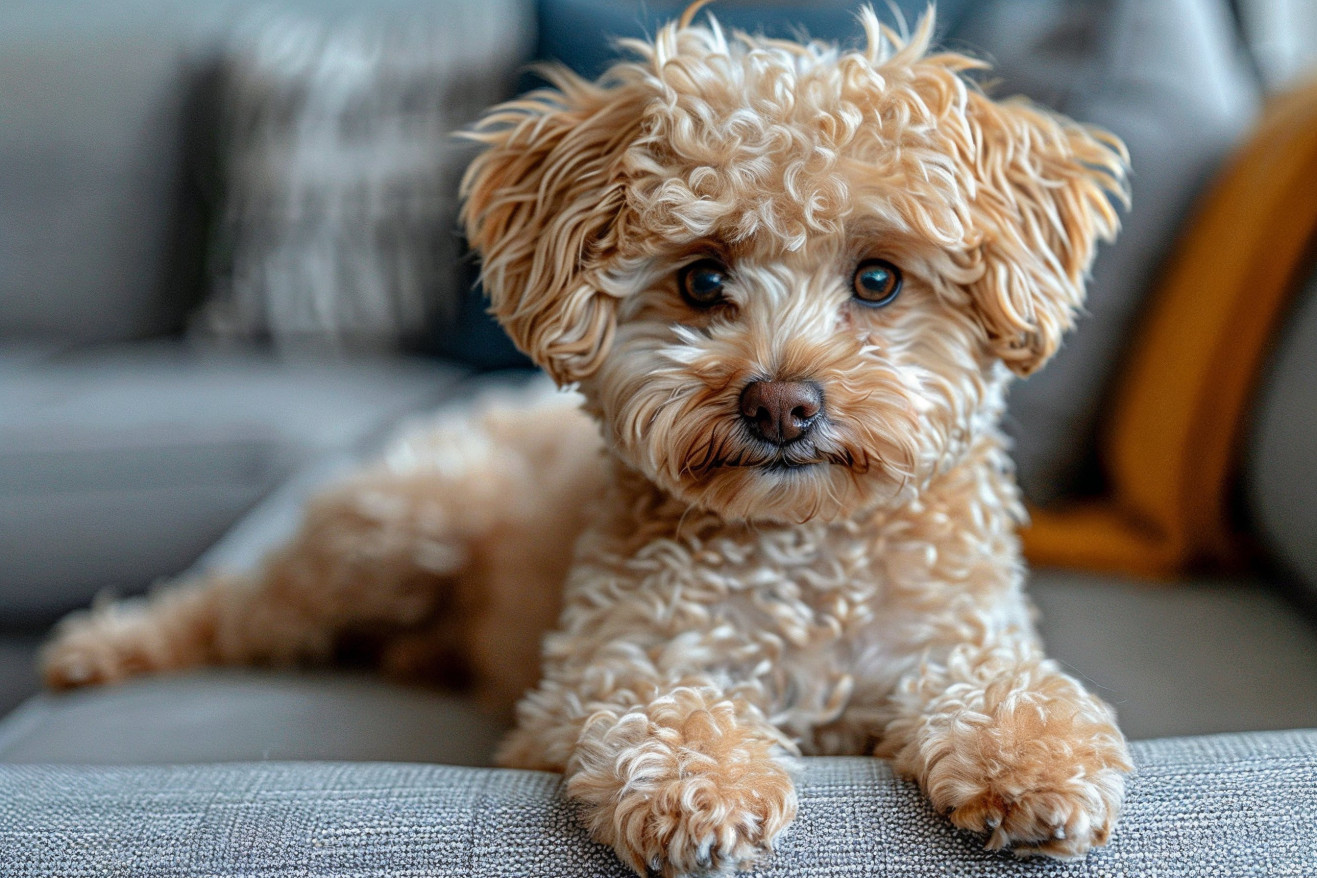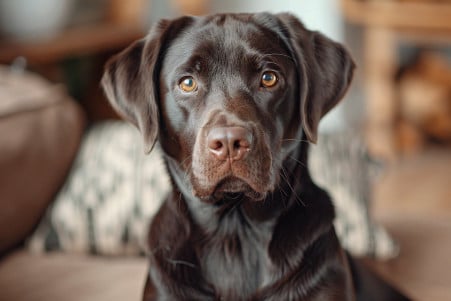Are Maltipoos Hypoallergenic? A Scientific Look at Dander and Allergens
15 April 2024 • Updated 15 April 2024

Despite being marketed as hypoallergenic, Maltipoos’ low-shed coats still leave room for allergens to be created through dander, saliva, and urine, leading to the question of whether or not these designer dogs are actually safe for people with allergies. Maltipoos are often labeled as hypoallergenic due to their low-shedding coats. However, no dog is completely hypoallergenic. Maltipoos can still cause allergies through dander that gets trapped in their fur and licking or bodily fluids.
We will be looking at scientific studies on pet allergens, dander production in different dog breeds, and expert opinions from veterinarians. This research is intended to help you better understand whether or not Maltipoos can be considered hypoallergenic and help you make a more informed decision if you are thinking about getting one. By looking at the pros and cons of this breed’s allergen production, you can decide if a Maltipoo is the right choice for your family.
Are Maltipoos hypoallergenic?
Breaking Down the Maltipoo's Fur: Coat Type, Shedding, Dander, and Allergen Levels
Maltipoos have a single coat that doesn't shed as much as a double coat. According to PetMaltipoo.com, the allergen is primarily the dander (dead skin cells) that sticks to the dog's fur, not the fur itself. The hair-like, silky texture of the Maltipoo's coat allows the dander to fall off more easily than it would from a thicker coat that would trap it.
That said, Maltipoos are still low-shedding dogs, so they do shed some dander and hair, which can still cause allergic reactions in people who are sensitive. As Dogster explains, no dog is 100% hypoallergenic because all dogs produce dander to some extent. However, the amount of shedding and dander a Maltipoo produces can vary from dog to dog based on factors like their coat and genetics.
Keeping a Maltipoo's coat well-groomed is important for keeping allergen levels low. Regular brushing can help remove loose hair and dander, and bathing a Maltipoo with a gentle, hypoallergenic shampoo can help wash away the allergens that are on their coat. As My Doodle Puppy points out, it's important to dispel the myth that "hypoallergenic" dogs are allergen-free, and instead, it's important to focus on the fact that Maltipoos are low-allergen dogs. Regular grooming will help ensure that they can be as low-allergen as possible for people with allergies.
Grooming and Maintenance: How to Manage Maltipoo Allergens
Regular grooming, which includes brushing, bathing, and haircuts, is key to managing allergens in Maltipoos. According to Rocky Kanaka, brushing every 2-3 days will help remove dirt, debris, and loose hair, which can reduce the amount of dander that builds up. Bathing every 3-4 weeks with a mild, hypoallergenic shampoo, as suggested by My Doodle Puppy, can help remove dander and other allergens from the hair.
In addition, professional grooming every 6-8 weeks is important, according to Pet Health Pros, to ensure a healthy, tangle-free coat and to minimize shedding. Other suggestions from Rover.com include using air purifiers, washing hands after petting the dog, and avoiding touching the face to limit exposure to allergens. By following these grooming practices, Maltipoo pet parents can ensure that they're able to manage allergens effectively.
The Maltipoo Temperament: Can They Be Good Family Pets?
Maltipoos are loved for their sweet, friendly, and lively temperament, which makes them great family pets. According to My Doodle Puppy, they combine the Maltese's loyalty and playfulness with the Poodle's intelligence and adaptability. As a result, Maltipoos are friendly, eager to please, and they bond closely with their people.
On the other hand, their intelligence can lead to stubbornness, and Doodle Doods warns that Maltipoos need to be trained and socialized consistently to avoid problems like barking and separation anxiety. They also need to be exercised and mentally stimulated regularly, as an unexercised Maltipoo can become destructive out of boredom, according to Ollie Blog.
Maltipoos usually get along well with other pets and kids, but Daily Paws suggests that they be supervised around other pets and kids, especially small children, because of their small, delicate size. Their adaptability makes them a good fit for apartment living, but they still need to be exercised and mentally stimulated daily to keep them healthy and happy.
In the end, Maltipoos' loving, eager-to-please nature makes them wonderful family pets, as long as their owners are willing to meet their training, exercise, and socialization needs. Knowing what to expect from their temperament will help ensure that you have a happy, fulfilling relationship with your pet.
Maltipoo Health and Longevity: Common Issues and Preventative Care
Maltipoos have an average life expectancy of 12-16 years, which is longer than many other small breeds, according to My Doodle Puppy. However, they are prone to certain health problems that will require careful preventative care.
Dogster lists some of the most common issues, which include dental disease, patellar luxation, eye infections, and neurological problems such as Shaker Syndrome. A proper diet, regular exercise, and regular vet visits are important, according to PetMD, to ensure the Maltipoo stays healthy.
Spaying or neutering can help reduce the risk of certain health issues, but Embrace Pet Insurance warns that obesity can make many Maltipoo health issues worse. Early diagnosis and treatment, according to Pet Health Pros, are important for increasing the Maltipoo's life expectancy and quality of life.
With regular preventative care, Maltipoo pet parents can help their dogs live long, healthy lives despite their predisposition to certain health issues. Catching and treating health problems early is important for ensuring the Maltipoo lives as long as possible.
Conclusion: What to Know Before Getting a Maltipoo
Maltipoos are often called hypoallergenic dogs because they don't shed much and produce less dander than other breeds. However, as PetMaltipoo.com notes, no dog is truly hypoallergenic because all dogs produce dander, which is the main cause of dog allergies, not the fur itself. Maltipoos' hair-like, silky coat allows dander to fall off more easily than other breeds with thicker coats that hold dander in.
Regular grooming, including brushing, bathing, and professional grooming, is important for keeping allergens in check. Rocky Kanaka recommends brushing every 2-3 days and bathing every 3-4 weeks with a hypoallergenic shampoo to help keep dander and allergens to a minimum. Other suggestions from Rover.com like using air purifiers and washing hands after petting the dog can also help reduce exposure.
In addition to the need for regular grooming, Maltipoos are friendly, energetic, and adaptable, but they can also be prone to behavioral issues like barking and separation anxiety if they aren't trained and socialized consistently, according to Doodle Doods. They also need regular exercise and mental stimulation to prevent them from becoming bored and engaging in destructive behavior.
Maltipoo owners should also be aware of the breed's common health issues, which include dental problems, joint problems, and neurological issues, according to Dogster. Regular vet visits and preventive care can help ensure Maltipoos stay healthy and happy.
In the end, whether or not you should get a Maltipoo depends on your understanding of the breed's traits and your individual allergies. While Maltipoos are low-allergen dogs, they aren't allergen-free, so it's important to think about your specific needs and lifestyle before bringing one home.


